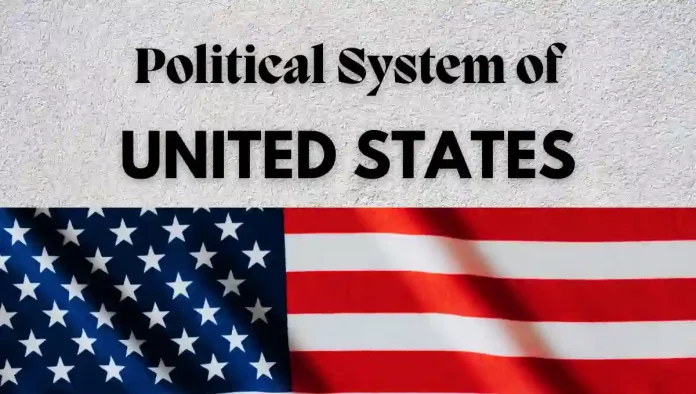Political System of United States of America is consists of Presidential system and whole system is run by a constitution. The introductory part of the Constitution is known as the Preamble. It states the purpose of the Constitution and sets out the goals that the framers had for the new government. It begins with the famous phrase, “We the People of the United States, in Order to form a more perfect Union, establish Justice, insure domestic Tranquillity, provide for the common defence, promote the general Welfare, and secure the Blessings of Liberty to ourselves and our Posterity, do ordain and establish this Constitution for the United States of America.” The Preamble establishes the idea of a government that is by the people and for the people.
General Features of the Constitution of United States of America
The Constitution has several general features that define the framework of the US government. It is a written document that outlines the structure of the federal government and provides a system of checks and balances to prevent any one branch of government from becoming too powerful. It also establishes a system of federalism, where power is shared between the national government and the state governments. The Constitution also includes a Bill of Rights, which lists the first ten amendments to the Constitution and guarantees individual liberties such as freedom of speech and religion, the right to bear arms, and protections against unreasonable searches and seizures.
Federalism of the USA Constitution
Federalism is a key feature of the US Constitution, which means that power is divided between the federal government and the state governments. The federal government has certain enumerated powers, such as the power to regulate commerce and declare war, while the states retain all powers not specifically granted to the federal government. This system of federalism allows for a balance of power between the two levels of government, and provides for greater local control over certain issues.
The United States Executive
The Executive branch of the US government is responsible for enforcing the laws and consists of the President, Vice President, and various departments and agencies. The President is the head of the Executive branch and serves as the commander-in-chief of the armed forces. The Vice President is next in line for the presidency in the event that the President is unable to fulfil their duties. The Executive branch is also responsible for conducting foreign affairs and negotiating treaties with other nations.
The Congress
The Congress is the legislative branch of the US government and is responsible for making the laws. It is divided into two chambers, the Senate and the House of Representatives. The Senate has 100 members, with two senators from each state, while the House of Representatives has 435 members, with the number of representatives from each state based on its population. Congress is responsible for passing the federal budget, declaring war, and confirming presidential appointments, among other duties.
The Supreme Court
The Supreme Court is the highest court in the US and is responsible for interpreting the Constitution and ensuring that laws are consistent with it. The Court is made up of nine justices, who are appointed by the President and confirmed by the Senate. The Court hears cases on appeal from lower federal and state courts, and its decisions are binding on all other courts in the country.
Political Parties
Political System of United States of America run by political parties, While political parties are not specifically mentioned in the Constitution, they have played a significant role in shaping US politics since the early days of the country. The two major political parties in the US are the Democratic Party and the Republican Party, although there are also several smaller parties. Political parties provide a way for voters to align themselves with a particular set of beliefs and values, and they help to shape public policy by advocating for their preferred positions on issues.
